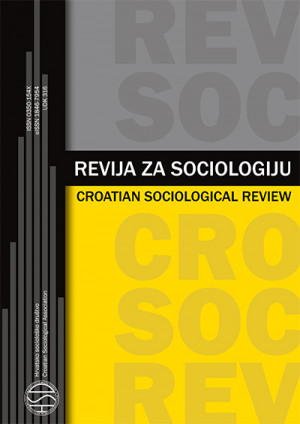Reaching Out from a Small Scientific Community: The Social Influence Models of Collaboration across National and Disciplinary Boundaries for Scientists in Three Fields of Social Sciences
Reaching Out from a Small Scientific Community: The Social Influence Models of Collaboration across National and Disciplinary Boundaries for Scientists in Three Fields of Social Sciences
Author(s): Srebrenka Letina, Garry Robins, Darja Maslić SeršićSubject(s): Social Sciences, Electronic information storage and retrieval, Evaluation research
Published by: Hrvatsko sociološko društvo
Keywords: autologistic actor attribute models (ALAAM); co-authorship network; scientific collaboration; national and disciplinary community (NDC); peripheral scientific community; social sciences;
Summary/Abstract: Collaboration among scientists from different fields or countries is important for scientific progress in general, particularly for scientists working in small peripheral scientific communities. The aim of this study was to investigate the network effects in three disciplinary scientific communities in social sciences in Croatia on the probability of scientists to establish co-authorship/collaboration outside the community. Co-authorship data from publications indexed in two international databases (Web of Science and Scopus) and one national database (National and University Library) were used to define the networks. Autologistic actor attribute models enabled the testing of three network effects (Activity, Contagion and Popularity /Ego-2Star/)while controlling for six actor attributes. The results confirmed the hypotheses about positive Contagion (the probability of establishing outside collaborations is higher if immediate network partners have also been collaborating outside the field) and negative Activity (scientists collaborating with one or more scientists outside the national and disciplinary community are less active in that network) for educational sciences,provided mixed support in the case of sociology (only negative Activity was confirmed),while the field of psychology showed no network effects. A significant effect was observed for the number of co-authored papers whereas the scientist’s age and number of single-authored papers were not significant in any of the three disciplines,Gender, location and maximum strength of a tie proved to be of different importance for different fields. Methodological issues in co-authorship network analysis are discussed and directions for future research are proposed.
Journal: Revija za sociologiju
- Issue Year: 46/2016
- Issue No: 2
- Page Range: 103 - 139
- Page Count: 37
- Language: English

